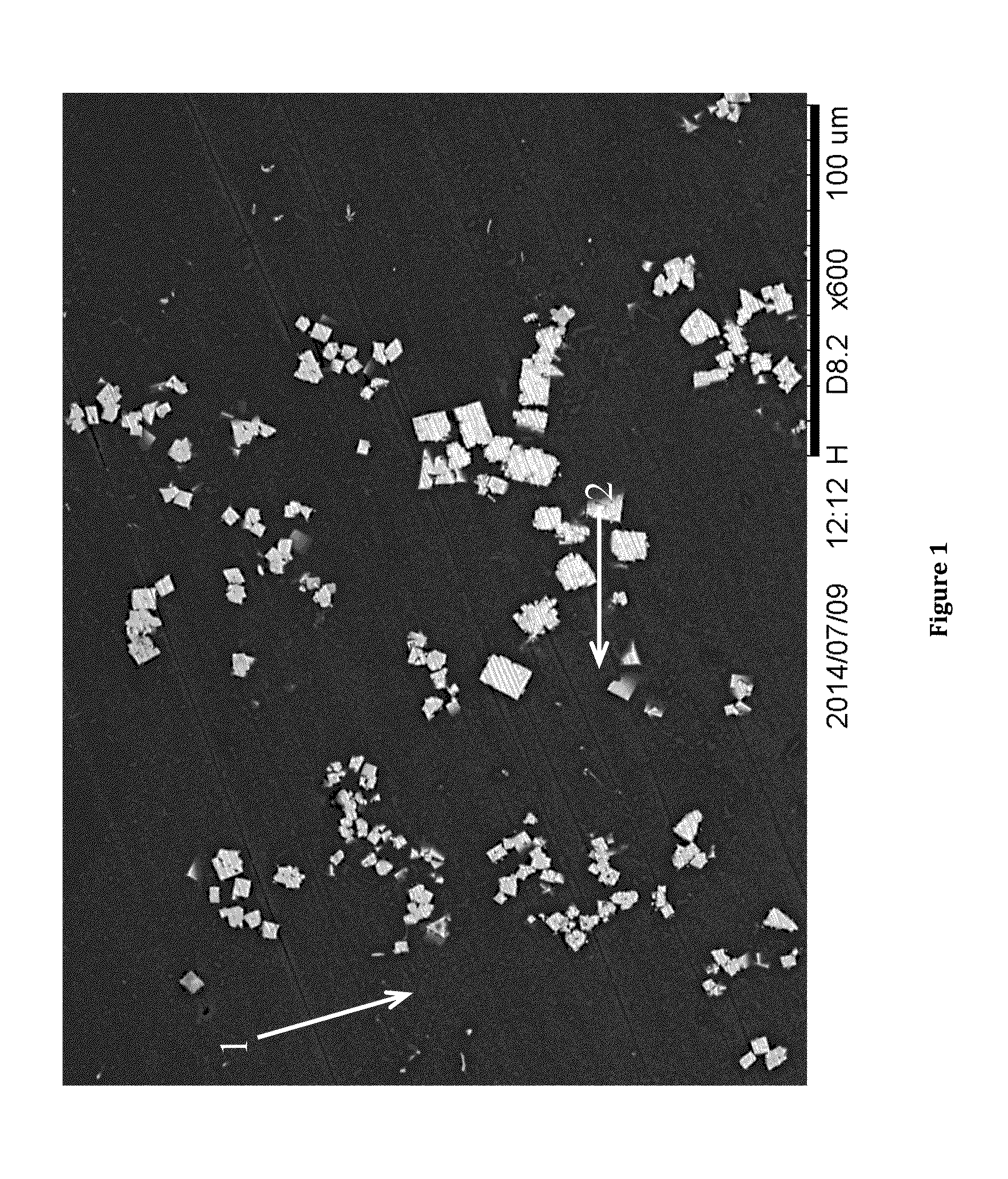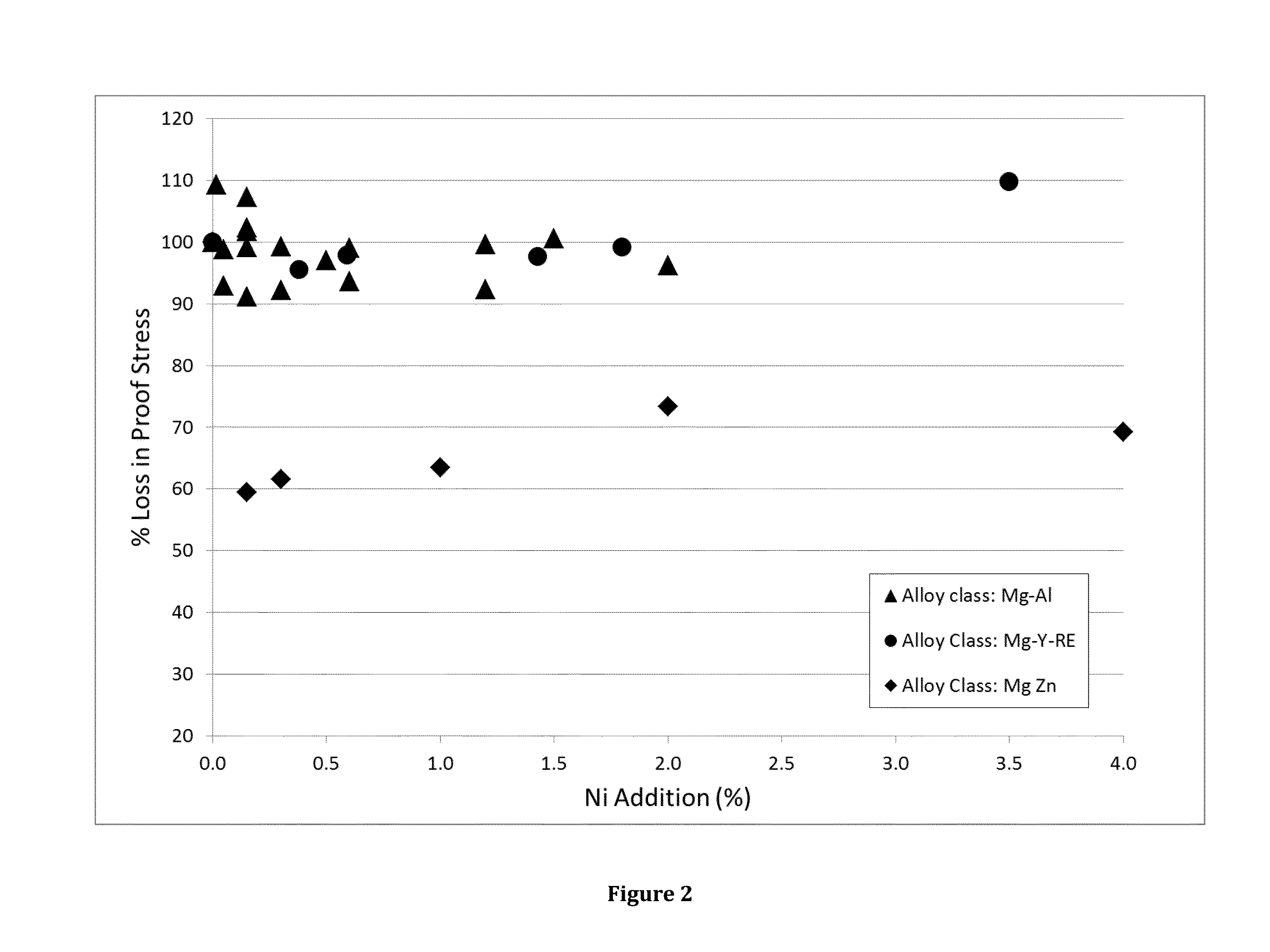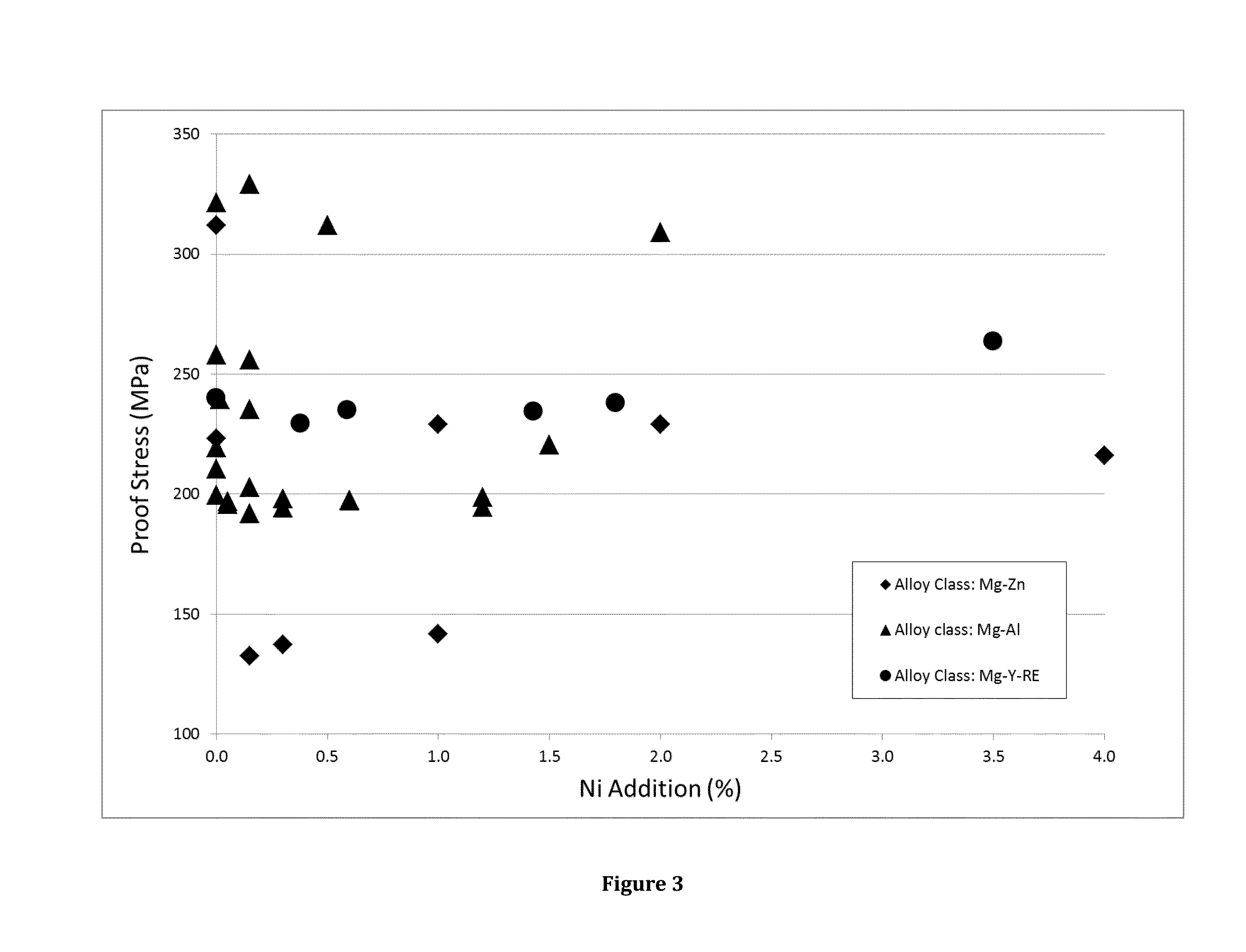Corrodible downhole article
a downhole and article technology, applied in the direction of wellbore/well accessories, sealing/packing, chemistry apparatus and processes, etc., can solve the problems of corroding or dissolving, hammer production, and polymer general lack of particularly high mechanical strength
- Summary
- Abstract
- Description
- Claims
- Application Information
AI Technical Summary
Benefits of technology
Problems solved by technology
Method used
Image
Examples
example 1
[0068]A base magnesium alloy consisting of the commercial alloy AZ80A which has a typical chemical composition of 8.5 wt % Al, 0.5 wt % Zn and 0.3 wt % Mn, was melted by heating to 750° C. and nickel was added to it in amounts ranging between 0.01% wt to 1% wt. The product was then cast into a billet and extruded into a rod.
[0069]In order to simulate the mild and extreme corrosion performance in a well, the material was corrosion tested by measuring weight loss in an aqueous solution of 3 wt % potassium chloride at a constant temperature of 38° C. (100° F.) and 15 wt % potassium chloride aqueous solution at a constant temperature of 93° C. (200° F.).
[0070]The corrosion rates are shown in Table 1 below. The samples comprise the standard alloy (ie AZ80A without nickel added), and two samples with different amounts of nickel added.
TABLE 1Corrosion rate inCorrosion rate inNickel3% KCL at 38° C.15% KCL at 93° C.concentration(100° F.)(200° F.)Sample IDWt %Mg / cm2 / d...
example 2
Magnesium Yttrium Rare Earth Alloy
[0074]The procedure of Example 1 was repeated, but with the base magnesium alloy AZ80A being replaced by commercial alloy Elektron 43. A WE43C alloy was used with a composition of 3.7-4.3 wt % Y, 0.2-1.0 wt % Zr, 2.0-2.5 wt % Nd and 0.3-1.0 wt % rare earths.
[0075]The corrosion rates are shown in Table 3 below. The samples comprise the standard alloy (i.e., WE43C without nickel added), and five samples with different amounts of nickel added.
TABLE 3Corrosion rate inCorrosion rate inNickel3% KCl at 38° C.15% KCl at 93° C.concentration(100° F.)(200° F.)Sample IDWt %Mg / cm2 / dayMg / cm2 / dayStandard alloyDF9911D0.194DF9912A0.278308DF9912B0.4199643DF9912C0.62203929DF9915C0.653021075DF9915D1.435421811
[0076]The data in Table 3 clearly shows the increased corrosion level achieved in the samples to which nickel has been added, with a higher nickel content resulting in a higher corrosion rate.
[0077]The mechanical properties of these samples were also tested using s...
example 3a
[0079]Further magnesium alloy compositions were prepared by combining the components in the amounts listed in Table 5 below (the balance being magnesium). These compositions were then melted by heating at 750° C. The product was then cast into a billet and extruded to a rod.
TABLE 5Mg—AlAlloy Additions (wt %, balance magnesium)Sample IDAlCaSnZnMnNiA18.40.40.2 0.00A28.40.40.2 0.02A38.40.40.2 0.15A48.40.40.2 1.50A56.50.70.3 0.00A66.50.70.3 0.05A76.50.70.3 0.15A86.50.70.3 0.30A96.50.70.3 0.60A106.50.70.31.20A113.00.70.3 0.00A123.00.70.3 0.05A133.00.70.3 0.15A143.00.70.3 0.30A153.00.70.3 0.60A163.00.70.31.20A173.53.00.00.3 0.00A18 4.05.00.00.50.15A19 4.03.60.00.40.50A20 3.53.00.00.32.00A21 8.04.02.00.30.00A22 8.04.02.00.30.15
[0080]The mechanical properties of these samples were also tested using the same standardised tension tests, and the results are shown in Table 6 below.
TABLE 6Alloy class: Mg—AlPercentage ProofCorrosion Rate in 15%0.2% ProofStrengthKCl at 93...
PUM
| Property | Measurement | Unit |
|---|---|---|
| wt % | aaaaa | aaaaa |
| temperature | aaaaa | aaaaa |
| melting point | aaaaa | aaaaa |
Abstract
Description
Claims
Application Information
 Login to View More
Login to View More - R&D
- Intellectual Property
- Life Sciences
- Materials
- Tech Scout
- Unparalleled Data Quality
- Higher Quality Content
- 60% Fewer Hallucinations
Browse by: Latest US Patents, China's latest patents, Technical Efficacy Thesaurus, Application Domain, Technology Topic, Popular Technical Reports.
© 2025 PatSnap. All rights reserved.Legal|Privacy policy|Modern Slavery Act Transparency Statement|Sitemap|About US| Contact US: help@patsnap.com



